|
Speed
The decisive aspect for the speed of a velomobile are its aerodynamic properties.
Eggert Bülk, who is responsible for the aerodynamic shape of the Milan, has
discussed the aerodynamics of HPVs in
an article (german) in the "PRO VELO" magazine as early as 1993.
Wheel arches:
If the body shape of a velomobile is interrupted by open wheel arches, the laminar
stream in this part will be transformed into a turbulent stream, creating a
significantly higher aerodynamic drag. This is why the front wheel arches of
the Milan are closed to the sides. The openings in the undercarriage are as small
as possible, which keeps the amount of rotating air flow escaping very small.
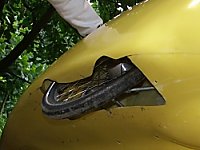
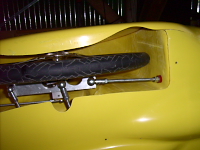
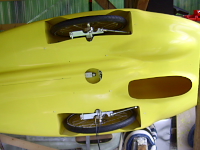
Frontal area:
The frontal profile of the Milan has been kept small consequently. This
has been achieved by creating individual bulges for all the protruding
body parts of the rider (shoulders, head, rotating knees, heels and
toes). The bulges for the heels allow to do without openings in the
laminar part of the Milan's body.
Nose:
The shape of the Milan's nose is designed to reduce the amount of air
flowing under the vehicle. This prevents an airflow disruption caused
by the profile reduction between the undercarriage and the road.
Undercarriage:
The undercarriage is efficently streamlined with a special air guide and flattening.
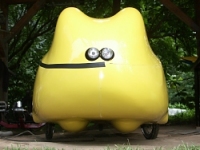
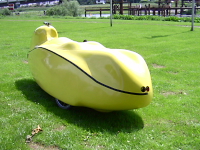
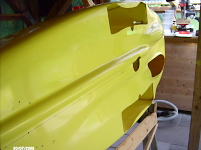
Head fairing:
Because the rider's head usually creates a lot of aerodynamic drag, the
Milan sports a head fairing, which "catches" the turbulent stream behind
the rider's head and directs it rearward less turbulently. As it needs to
have a slightly larger profile than the head to achieve this, it also
serves as an excellent rollover protection.
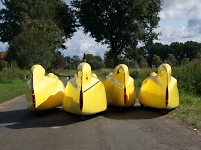
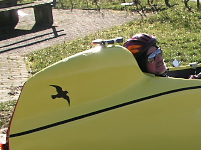
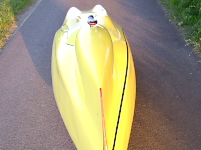
|


 Home
Imprint
Home
Imprint








